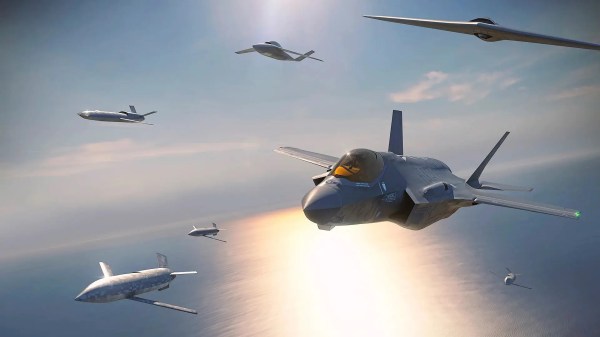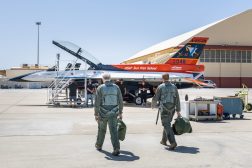Air Force taps JetZero to build blended-wing body aircraft prototype

Startup company JetZero will build and demonstrate a prototype of a blended-wing body aircraft for the Air Force by 2027, Air Force Secretary Frank Kendall announced Wednesday.
“The prototype demonstration project is intended to accelerate the next generation of what may be the large aircraft fleet that the Air Force needs in the future,” Kendall said during an event hosted by the Air and Space Forces Association. “There’s real potential in this technology to help increase fuel efficiency significantly. That’s going to lead to improvements in not just the efficiency and capabilities of our force, but also our impact on the climate.”
The contract is being managed by the Pentagon’s Defense Innovation Unit, which released a solicitation for the aircraft in 2022 looking for configurations that could complete refueling and logistics missions.
The Pentagon plans to invest $235 million over the next four years in order to expedite development of the aircraft. Additional investment from the private sector is expected, according to the Air Force.
A blended-wing body aircraft departs from traditional aircraft designs by “blending” the platform’s wings and fuselage together, reducing aerodynamic drag and increasing lift for the system.
The concept is not a new one, as both the U.S. government and commercial airline industry have been studying blended-wing bodies for at least three decades. But advancements in structural design, materials and manufacturing have made large-scale production of the aircraft attainable, according to an Air Force press release.
The design potentially offers improved fuel efficiency, range and signature management capabilities — which will be key as the Air Force looks towards operations in the Indo-Pacific, said Ravi Chaudhary, assistant secretary of the Air Force for energy, installations and environment.
“It’s no stretch to say that operational energy will be the margin of victory in a near-peer conflict. This is about getting back to basics with what airpower delivers for the joint fight — speed, range, endurance and flexibility,” Chaudhary said during the AFA event Wednesday. “But it’s also about efficiency. Because in the Indo-Pacific we expend a little more gas, we need a little more efficiency, the distances are a little bit longer.”
California-based JetZero plans to collaborate with Northrop Grumman and Scaled Composites to build and test a full-scale demonstrator by the service’s deadline of 2027. Pratt & Whitney will also supply GTF engines for the aircraft, as well as design and integration support for the demonstrator’s propulsion system, according to a JetZero press release.
Chaudhary said the Air Force’s blended-wing body platform could potentially inform its future tanker and airlift programs — the Next Generation Air-refueling System (NGAS) and the Next Generation Airlift (NGAL), respectively. The service is preparing to begin the analysis of alternatives process for the next-generation tanker, he added.
However, it’s too early to say that JetZero’s demonstrator is the service’s ultimate solution for NGAS, said Maj. Gen. Albert Miller, Air Mobility Command’s director of strategy, plans, requirements and programs.
“It’s going to have to be able to operate in threat environments that we’ve never had tankers have to operate in before,” Miller said at the AFA event. “So what this potentially informs is a blended-wing body approach might yield fuel efficiencies, which means for the same amount of gas that you can offload at a certain distance from a shorter runway, it might yield some things in that NGAS look.”
The Air Force is collaborating with DIU, NASA and the Pentagon’s Office of Strategic Capital on the prototyping effort.






